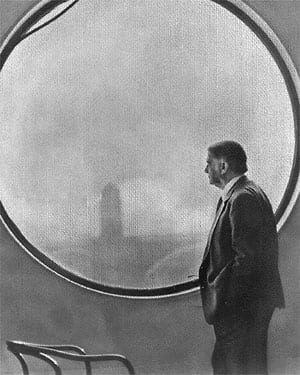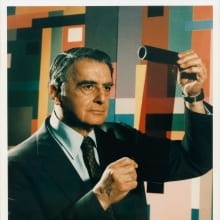Mission
The Rowland Institute exists to advance science in diverse fields without regard to the boundaries between them. We provide early-career Rowland Fellows the scientific community and administrative support to conduct risky and creative experiments in science and engineering, and to emerge as leaders of their fields.
Vision
We aim to foster the strongest possible research programs and innovative scientific careers by supporting the Rowland Fellows with a community of administrative and scientific staff, extensive research and career guidance, resources, modern equipment, state-of-the-art facilities, and opportunities to engage with the wider scientific community. Our vision is for a Rowland Institute that is inspiring, empowering, agile, and visionary, from which Fellows will launch their independent careers.
History

The Rowland Institute was originally founded by the late Edwin H. Land in 1980 as The Rowland Institute for Science, a privately endowed, nonprofit, basic research organization, conceived to advance science in a wide variety of fields. Since the Rowland’s inception, its scientists have discovered and published unique and exciting research results in their chosen research areas.
Dr. Land was the founder of Polaroid Corporation and its Director of Research for 50 years, inventing and developing the first sheet polarizers and instant photography and amassing 533 patents. He served as chairman of the Intelligence Section of President Eisenhower’s Technical Capabilities Panel and was responsible for work on critical surveillance systems (U2/SR71/satellites). He worked closely with MIT and other universities in developing novel educational programs. The most well-known of these programs is the Undergraduate Research Opportunities Program (UROP), first developed at MIT and subsequently emulated at many universities in the United States. Dr. Land spent a lifetime cross-fertilizing various educational, industrial, scientific, and public service domains and institutions. He encouraged and supported the development of novel approaches in all these areas. His “last experiment” (to quote a 1992 Science article) was the creation of The Rowland Institute for Science.
The concept of a relatively small yet highly productive interdisciplinary institution–whose culture is focused on the success of the group as well as the individual–was originally conceived by Dr. Land as a powerful instrument for scientific advancement. In addition, he understood the critical importance of stable and long-term support of research projects for enabling the careful and deep efforts required to explore the implications of an idea. The success of this research model, embodied in the development and current structure of the Rowland Institute at Harvard, is reflected in the publication of emerging and important findings in a range of core scientific disciplines by a surprisingly small group of exceptional researchers. While focused primarily on their own research projects, the scientists at Rowland keep in mind the aims and ideals of this unique institution, and are committed to helping the Institute evolve.
Edwin H. Land

Edwin H. Land was distinguished for his inventions and contributions in the fields of polarized light, photography and colour vision. He has had an impact on the lives of many millions of people and has provided large-scale employment in many countries for over five decades. The Polaroid Corporation, which Land founded, may continue to do so for many more. He mastered the art of giving the people what they wanted at a price they could afford. He has had few peers in the advancement and application of natural science to everyday life. Land’s achievements spanned the disciplines of art, science, technology and commerce.
Tribue to 100 Edwin H. Land Boulevard
100 Edwin H. Land Boulevard
Tour the building that Dr. Land designed as the first home for the Rowland Institute of Science.
Archives
To explore an archived version of our 2012 Rowland Website, please click here.
